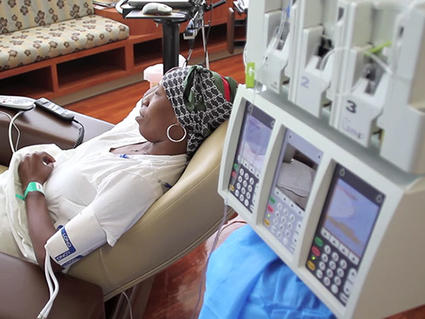
TAILOR trial found most women with early breast cancer do not benefit from chemotherapy
On Jun. 3, 2018, findings were reported from the groundbreaking Trial Assigning Individualized Options for Treatment (Rx), or TAILOR trial, that showed no benefit from chemotherapy for 70 percent of women with the most common type of breast cancer.
The National Cancer Institute (NCI) funded study found that for women with hormone receptor (HR)–positive, HER2-negative, axillary lymph node–negative breast cancer, treatment with chemotherapy and hormone therapy after surgery is not more beneficial than treatment with hormone therapy alone.
hormone therapy alone is not inferior to hormone therapy plus chemotherapy. The trial used a molecular test (Oncotype DX Breast Recurrence Score) that assesses the expression of 21 genes associated with breast cancer recurrence to assign women with early-stage, HR-positive, HER2-negative, axillary lymph node–negative breast cancer to the most appropriate and effective post-operative treatment. The trial enrolled 10,273 women with this type of breast cancer at 1,182 sites in the United States, Australia, Canada, Ireland, New Zealand, and Peru.
When patients enrolled in the trial, their tumors were analyzed using the 21-gene expression test and assigned a risk score (on a scale of 0–100) for cancer recurrence. Based on evidence from earlier trials, women in the trial who had a score in the low-risk range (0–10) received hormone therapy only, and those who had a score in the high-risk range (26 and above) were treated with hormone therapy and chemotherapy.
Women in the trial who had a score in the intermediate range (11–25) were randomly assigned to receive hormone therapy alone or hormone therapy with adjuvant chemotherapy. The goal was to assess whether women who received hormone therapy alone had outcomes that were as good as those among women who received chemotherapy in addition to hormone therapy.
The researchers found that the primary endpoint of the trial, invasive disease-free survival—the proportion of women who had not died or developed a recurrence or a second primary cancer—was very similar in both groups. Five years after treatment, the rate of invasive disease-free survival was 92.8 percent for those who had hormone therapy alone and 93.1 percent for those who also had chemotherapy. At nine years, the rate was 83.3 percent for those with hormone therapy alone and 84.3 percent for the group that had both therapies. None of these differences were considered statistically significant.
The rates of overall survival were also very similar in the two groups. At five years, the overall survival rate was 98.0 percent for those who received hormone therapy alone and 98.1 percent for those who received both therapies, and at nine years the respective overall survival rates were 93.9 percent and 93.8 percent. This data adds to findings from a TAILORx analysis published in 2015 that provided prospective evidence that the gene expression test could identify women with a low risk of recurrence who could be spared chemotherapy.
Tags:
Source: National Cancer Institute
Credit:
